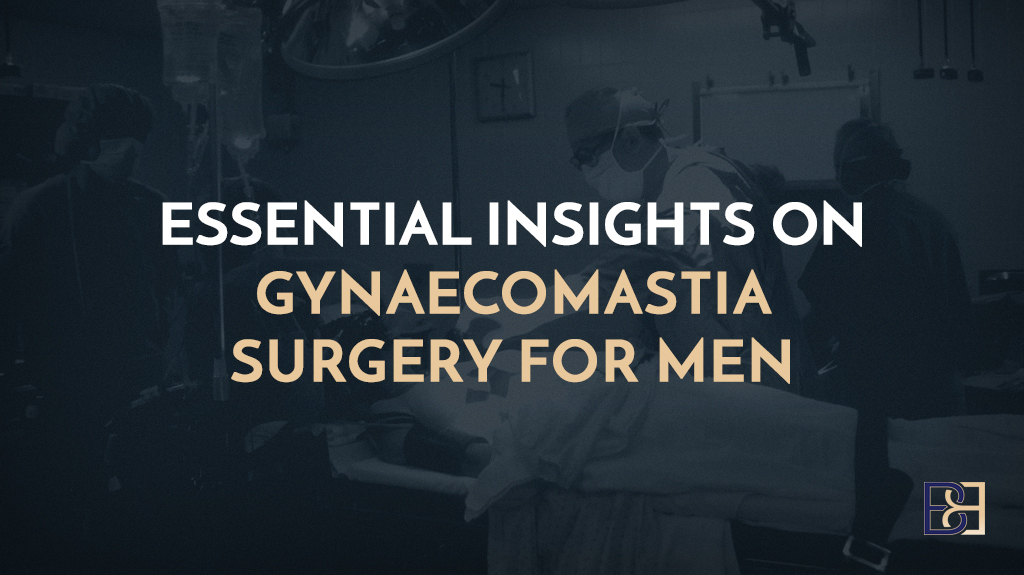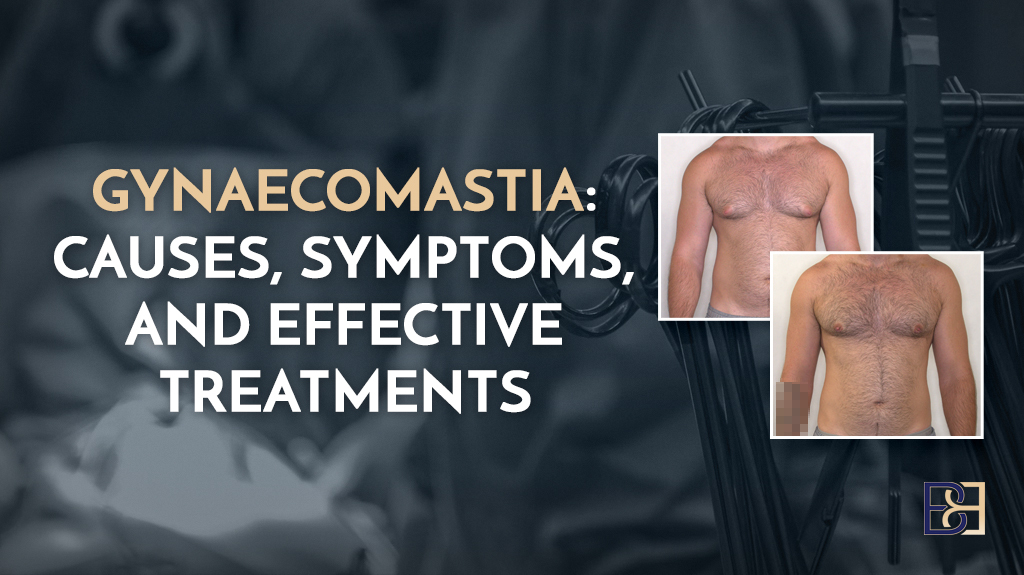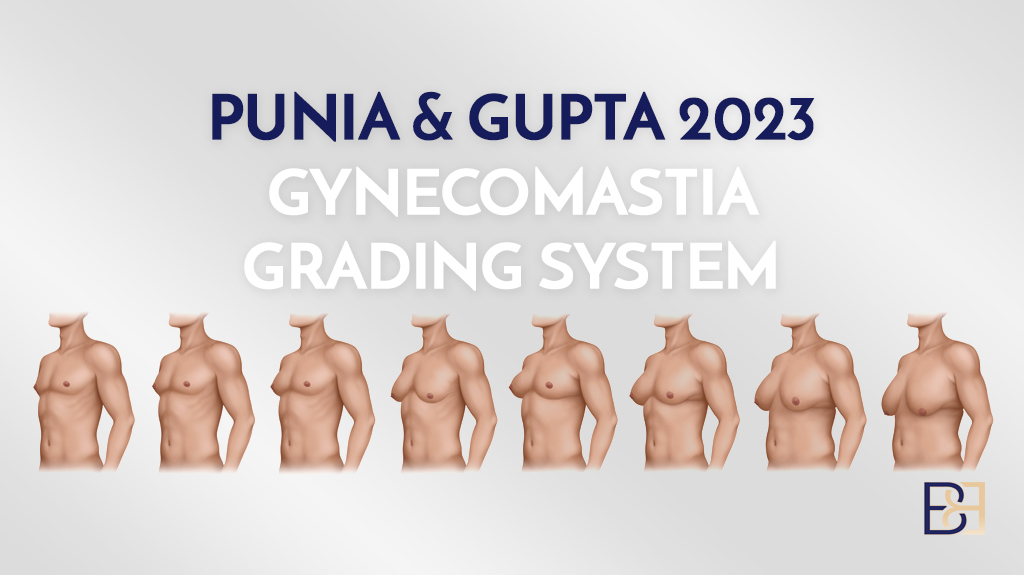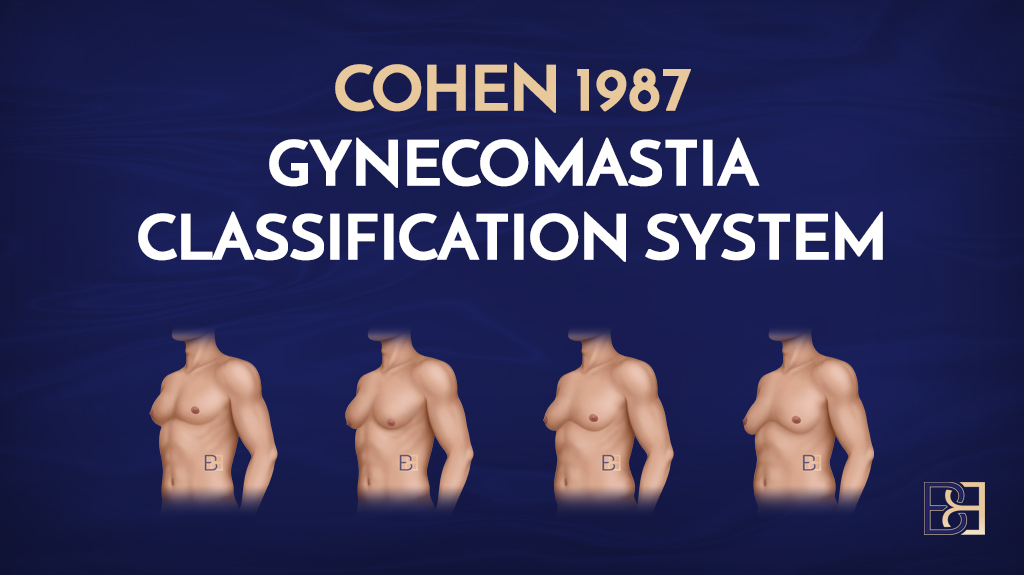Looking to reduce your gynaecomastia scar? This guide explains effective techniques and treatments to help your scars heal and fade. Learn about surgical methods, post-surgery care, and advanced treatments to achieve smoother, less visible scars.
Key Takeaways
- Gynaecomastia surgery results in scars, but most fade significantly over time with proper care.
- Surgical techniques like liposuction and careful incision placement can minimize scar visibility.
- Post-operative care, including hygiene, sun protection, and topical treatments, is essential for better scar healing.
Understanding Gynaecomastia Scars

Book your appointment online now
Understanding gynaecomastia scars is crucial for effective management. Gynaecomastia surgery, also called male breast reduction surgery, involves removing excess glandular tissue to create a flat male chest.
Most gynaecomastia patients find that their gynaecomastia surgery scar becomes barely noticeable over time, with about 96% noting minimal visibility once fully healed. Factors like surgical technique, healing process, and skin condition influence scar appearance.

Disclaimer: Operation performed by Dr Bernard Beldholm. Adult content, surgery has risks; individual results vary, seek 2nd opinion. Please see the full disclaimer.
Why Scarring Occurs
Scarring is a natural outcome of the body’s healing process after gynaecomastia surgery. When the skin is broken during surgery, the body responds by forming scar tissue to mend the wound.
This process occurs in three primary phases:
- The inflammatory phase: Initially, there is redness and swelling as the body starts to repair the broken skin.
- The proliferative phase: Collagen, a vital protein, rebuilds and strengthens tissue during healing.
- The remodelling phase: The scar tissue matures and becomes less noticeable over time.
The location and size of surgical incisions influence scar visibility. Larger incisions typically result in more prominent scars, whereas smaller, more precise incisions can lead to minimal scarring.
Over time, scars undergo changes; they often fade and become less noticeable as they mature during the remodeling phase. This fading process can vary based on individual healing rates and the care given to the wound.
While scars can fade and become less visible, they never completely disappear. Proper wound care, including keeping the incision clean and moisturised, ensures smooth scars and prevents complications like hypertrophic scars.
Types of Scars
Understanding the types of scars from gynaecomastia surgery is key to effective management. Two common types of scars are keloid scars and hypertrophic scars. Keloid scars are typically more severe as they extend beyond the original wound site and can grow larger over time. These scars are often harder to treat and can become a source of significant distress due to their prominent appearance.
Hypertrophic scars, on the other hand, remain within the boundaries of the incision but can still be raised and red. These scars are generally less severe than keloids and may fade over time with proper care and treatment. Both types of scars result from the body’s overproduction of collagen during the healing process, leading to excess scar tissue that can be more visible.
The appearance of scars varies based on factors like skin type, surgical technique, and incision healing.
With appropriate care and treatments, such as silicone sheets and scar gels, the visibility of these scars can be significantly reduced, helping ensure smooth scars that blend in more naturally with the surrounding skin.
Factors Influencing Scar Appearance

Disclaimer: Operation performed by Dr Bernard Beldholm. Adult content, surgery has risks; individual results vary, seek 2nd opinion. Please see the full disclaimer.
Several factors can influence the appearance of gynaecomastia scars, making some more visible than others. Genetics play a significant role in how an individual’s skin heals and how prominent scars become. Age, overall health, and skin type also contribute to the healing process and the eventual fading of scars.
The surgical technique used during gynaecomastia surgery is another critical factor. Advanced plastic surgery methods, such as placing incisions along the edges of the areolae, can help heal scars effectively. Additionally, the surgeon’s skill and precision in making smaller, more precise incisions can lead to less visible scarring.
Post-operative care is equally important in influencing scar appearance. Proper aftercare, including keeping the incision clean, avoiding sun exposure, and using scar treatments, can help ensure smooth scars and reduce the risk of developing more prominent scars. Sun exposure, in particular, can increase scar visibility by causing hyperpigmentation, making it essential to apply sun protection to the scars regularly.
Surgical Techniques for Minimising Scarring
The choice of surgical technique can have a significant impact on the visibility of gynaecomastia scars. Different methods, such as liposuction (Suction-assisted lipectomy), surgical excision, and combination approaches, offer varying benefits and challenges regarding scarring.
Selecting the right technique, often in consultation with a specialist surgeon, can help achieve reduced scarring and optimal aesthetic results.
Suction-assisted lipectomy (liposuction)

Suction-assisted lipectomy liposuction) is a popular surgical technique used in male breast reduction surgery for removing excess fat. This method is particularly beneficial for men with excess fat that contributes to the appearance of enlarged breasts. One of the key advantages of liposuction in gynaecomastia surgery is that it requires extremely small incisions, typically just one or two, which heal quite flat and fade over time. This results in small scars, often leaving only insignificant residual marks that are hardly noticeable.

Suction-assisted lipectomy (liposuction), preferred by specialists like Dr. Beldholm, uses ultrasonic technology to preserve surrounding tissues while effectively removing fat. The precision of Suction-assisted lipectomy (liposuction) allows for more targeted fat removal.
Overall, Suction-assisted lipectomy (liposuction) is an excellent option for gynaecomastia patients looking to achieve minimal scarring while effectively removing excess fat.
Surgical Excision

When dealing with significant glandular tissue, surgical excision becomes necessary. This method involves making longer incisions to remove the excess skin, which can result in more pronounced scars compared to Suction-assisted lipectomy (liposuction) alone. However, these incisions are usually placed strategically to reduce visibility, such as along the natural lines of the body or at the edges of the areolae.
Despite the potential for more significant scarring, surgical excision is essential.
Discussing scarring concerns with Dr Beldholm helps understand expected outcomes and steps to minimise visibility.
Combination Approaches
Combining liposuction with surgical excision offers a balanced approach to gynaecomastia treatment, allowing for effective tissue removal while minimising overall scarring. This method is particularly useful for patients with both excess fat and significant glandular tissue, as it leverages the benefits of both techniques.
By using Suction-assisted lipectomy (liposuction) to remove excess fat through small incisions, surgeons can achieve better results with less visible scarring. This combination approach ensures that the scars remain minimal and blend well with the surrounding skin, providing a more aesthetically pleasing result.
Post-Surgery Care for Better Scar Healing
Effective post-surgery care is crucial for ensuring better scar healing and achieving minimal scarring. Proper hygiene, sun protection, and massage techniques are essential components of post-operative care that can significantly influence the appearance of gynaecomastia surgery scars.
Proper Hygiene
Proper hygiene ensures smooth healing after gynaecomastia surgery. Clean incision sites prevent infection and promote faster healing. Patients should use antimicrobial soap and clean water to wash the wound sites daily. This routine cleaning removes any bacteria and debris that could potentially cause complications, ensuring that the skin heals properly and reduces the risk of developing more visible scars.
In addition to regular cleaning, it’s important to follow the surgeon’s instructions regarding wound care and dressing changes. Good hygiene practices significantly promote healing, resulting in smoother, less noticeable scars.
Sun Protection
Protecting healing scars from sun exposure is critical to prevent darkening and worsening of the scars. Sun exposure can increase the visibility of scars by causing hyperpigmentation, making them appear darker than the surrounding skin. To avoid this, patients are advised to avoid constant sunlight exposure for more than a couple of hours until the scars have significantly faded.
Applying sunscreen with at least SPF 50 shields scars from harmful UV rays. Applying sunscreen regularly, even on cloudy days, helps protect the healing skin and prevents permanent darkening of the scars. These precautions ensure scars fade effectively and blend better with surrounding skin.
Massage Techniques
Massage techniques can be highly beneficial in reducing scar tissue production and improving the appearance of scars. Once the wound is completely healed and approved by the surgeon, patients can start massaging the scar to promote better blood circulation and aid in the breakdown of scar tissue. Massage helps make the scars flatter and softer over time, reducing their visibility.
Before massaging the scar, it’s advisable to use unscented lotion or oil on the fingers. Regular massage can also help alleviate any discomfort or tightness in the scar area.
Topical Treatments for Scars

Topical treatments play a crucial role in improving the appearance of gynaecomastia scars. Silicone sheets, scar gels, and prescription medications are effective options that can help reduce scar visibility.
By incorporating these treatments into the post-surgery care routine, patients can achieve smoother and less prominent scars.
Silicone Sheets
Silicone sheets are widely recommended for their effectiveness in improving the appearance of scars. These sheets create a protective barrier that helps maintain moisture in the scar area, promoting a favourable environment for healing. By keeping the scar tissue hydrated, silicone sheets can prevent excess collagen production, often leading to more prominent scars. The moisture-retentive environment created by these sheets helps minimise scar visibility and encourages smoother scar formation.
Typically, silicone sheets are worn for 8-12 hours a day to maximise their effectiveness. They can be incorporated into the daily routine without much inconvenience.
Over time, consistent use of silicone sheets can lead to significant smoothing in the texture and appearance of scars, making them a valuable tool in post-surgery scar management.
Scar Gels and Creams
Scar gels and creams, particularly those made with silicone, are another effective option for treating gynaecomastia scars. These topical treatments work by hydrating the scar tissue and improving its texture and pigmentation. Silicone-based gels are known for their ability to flatten and soften scars, making them less noticeable over time. They can be applied directly to the scar and are often recommended as part of a comprehensive scar treatment plan.
In addition to silicone gels, other topical treatments like scar creams can also be beneficial. These creams often contain ingredients that promote skin healing and reduce inflammation, further reducing the appearance of scars. Regular application of scar gels and creams results in smoother scars.
Non-Invasive Treatments for Scars
Non-invasive treatments offer a significant reduction in scar appearance without the need for additional surgery. Techniques such as laser therapy, microneedling, and chemical peels can speed the healing process and reduce the visibility of gynaecomastia scars.
Laser Therapy
Laser therapy is a highly recommended non-invasive treatment for reducing scar visibility. This technique uses focused light to target the scar tissue, promoting collagen production and helping to flatten and soften the scar.
Laser therapy is particularly beneficial for treating dark scar tissue and hypertrophic scars, which are more challenging to manage with topical treatments alone. Incorporating laser therapy into scar management results in smoother, more aesthetically pleasing scars.
Microneedling
Microneedling is another effective non-invasive treatment for improving the appearance of gynaecomastia scars. This technique involves creating tiny injuries in the skin using fine needles, which stimulate the body’s natural healing process and promote collagen production.
Microneedling can be particularly useful for treating scars that are raised or have an uneven texture.
Chemical Peels
Chemical peels are a skin treatment that helps exfoliate and renew the skin, making them an effective option for improving the appearance of scars. By removing the outer layer of skin, chemical peels can smooth the texture and color of the scar, leading to smoother and more even skin. This treatment promotes skin regeneration, which can aid in the healing process of scar tissue.
Chemical peels are particularly beneficial for treating scars that have an uneven texture or discolouration. Regular treatments can help achieve smoother and more even skin, making the scars less noticeable over time.
Psychological Impact of Gynaecomastia Scars

The psychological impact of gynaecomastia scars can be significant. Visible scarring can lead to body image concerns and emotional distress, but effective scar management can help mitigate these effects.
Understanding the emotional aspects of scarring and adopting coping strategies can lead to positive outcomes.
Summary
Managing gynaecomastia scars effectively involves a combination of choosing the right surgical technique, diligent post-surgery care, and utilising various scar treatments. By understanding the factors that influence scar appearance and adopting proactive measures, patients can achieve smoother and less noticeable scars. The journey to minimal scarring and is a multifaceted process, but with the right approach, it is entirely achievable. Embrace the journey, follow the guidelines, and look forward to a scar-minimised future.
Frequently Asked Questions
What is gynaecomastia surgery?
Gynaecomastia surgery is all about getting rid of extra glandular tissue to help you achieve a flatter, male chest.
Does gynaecomastia surgery leave a scar?
Yes, gynaecomastia surgery does leave a scar, but it typically heals well.






